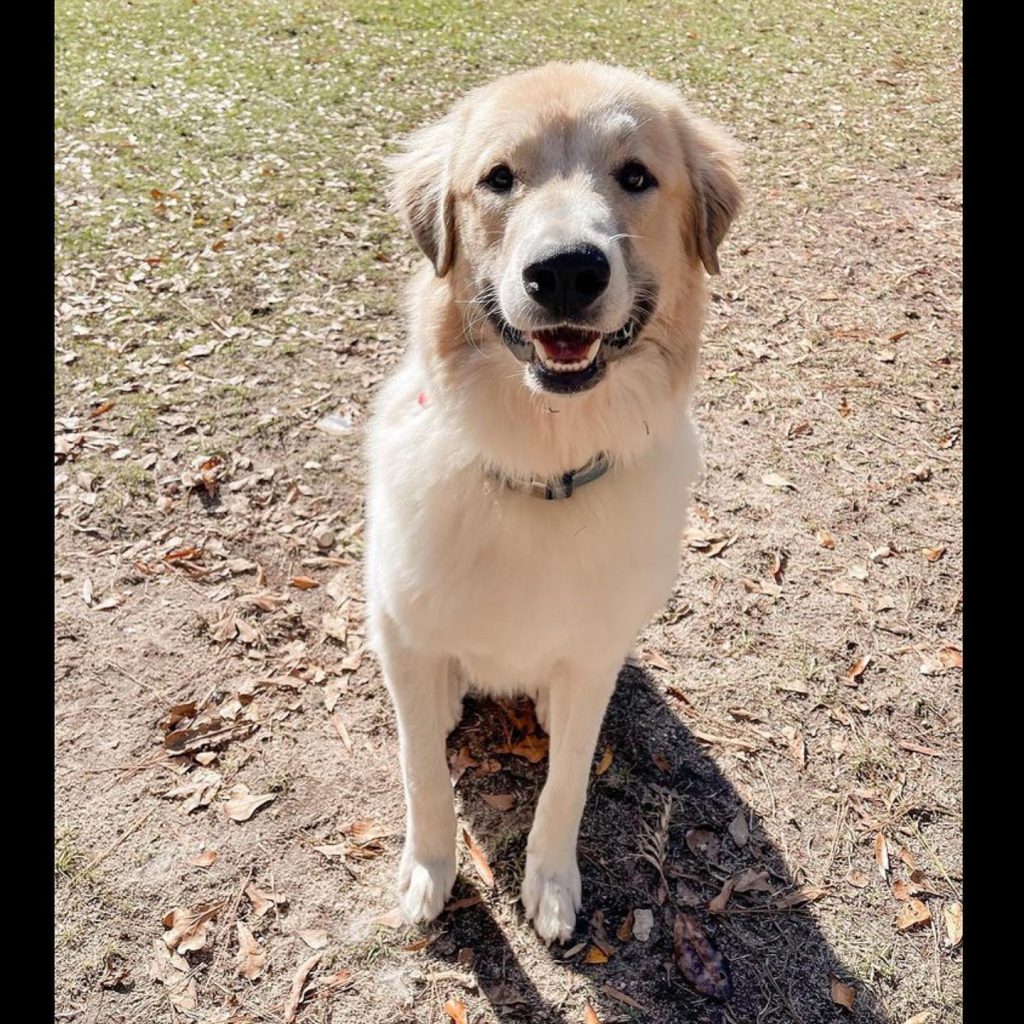
Understanding the Great Pyrenees Breed
The Great Pyrenees is a breed that embodies nobility, strength, and a gentle spirit. Known for their impressive size and beautiful, thick white coats, these dogs are stunning to look at and possess a calm and patient demeanor. Originally bred to guard livestock in the harsh mountain regions of the Pyrenees, they have evolved into loyal and protective family pets. Their history is rich with tales of bravery and loyalty, and they continue to be a symbol of steadfast guardianship and gentle companionship.
See also: Great Pyrenees Training
Breed Introduction and Overview
The introduction of the Great Pyrenees breed to the broader world beyond the Pyrenees Mountains marked a significant chapter in the history of canine breeds. Revered for their formidable size and serene nature, these dogs quickly gained popularity among nobility and shepherds. Their thick, white fur served as protection against the cold mountain climates and gave them a regal appearance that was highly valued.
The breed’s ability to navigate the rugged terrain of the Pyrenees while guarding flocks from predators showcased their intelligence, agility, and resilience. This combination of traits made them indispensable to the shepherds of the region. As the breed’s reputation grew, so did their roles, transitioning from primarily working dogs to beloved companions in homes worldwide. Despite this shift, the Great Pyrenees has retained its protective instincts, making it a vigilant guardian of its family and home.
The Great Pyrenees’ introduction to various societies has enriched the tapestry of dog breeds and highlighted the importance of understanding the unique characteristics and care requirements of such a distinguished breed. As we delve deeper into the critical aspects of the Great Pyrenees, it becomes evident that their majestic appearance is matched by their compassionate nature and unwavering loyalty.
Key Characteristics of the Great Pyrenees
The Great Pyrenees is distinguished not only by its imposing size but also by a combination of physical and personality traits that make it a unique breed. Understanding these characteristics is essential for anyone considering this breed as a companion or working dog.
Distinctive Physical Features
The Great Pyrenees is renowned for its majestic and powerful physique, which is immediately noticeable. Some of the most distinctive physical features include:
- Size: Males typically stand 27 to 32 inches tall at the shoulder, with females slightly smaller. Their robust build reflects their historical role as protectors of livestock.
- Coat: The breed is most famous for its beautiful, thick double coat that is predominantly white, although shades of gray, tan, or reddish-brown are also seen. This dense fur is not just for show; it provides insulation against extreme weather conditions.
- Head: The breed has a wedge-shaped head with a slightly rounded skull and a well-defined stop. The eyes are almond-shaped, exuding a soft, intelligent expression, and the ears are triangular and flop downwards.
- Tail: The tail is another distinctive feature; it is long and plumed, often carried low, but it can be raised in a “shepherd’s crook” when the dog is alert or excited.
Personality and Temperament Traits
The Great Pyrenees’ temperament is as remarkable as its physical appearance. Key personality traits include:
- Calm and Patient: Despite their size, they are known for their serene and composed demeanor, especially around family.
- Protective: They possess a strong protective instinct, making them excellent guardians of their home and family.
- Independent: This breed is known for its independence, a trait that served them well as solitary livestock guardians. This can make training a challenge and requires patience and consistency.
- Affectionate with Family: They are incredibly loyal and affectionate with their families, forming strong bonds. They are remarkably gentle and protective of children.
- Reserved with Strangers: While not aggressive, the Great Pyrenees can be wary of strangers, a trait stemming from their guardian heritage.
Understanding these key characteristics is crucial for potential owners to ensure they can provide the right environment and care for a Great Pyrenees, making the relationship between dog and owner fulfilling and harmonious.
The History and Origin of the Great Pyrenees
The Great Pyrenees breed boasts a storied past that intertwines with human history, particularly within the rugged landscapes of the Pyrenees Mountains. With its harsh climates and challenging terrains, this region played a pivotal role in shaping the breed’s characteristics and purpose.
Historical Background
Tracing back several millennia, the ancestors of the Great Pyrenees were integral to the pastoral communities of the Pyrenees. These dogs were revered for their imposing presence and innate ability to protect flocks from predators like wolves and bears. The breed’s origins are often shrouded in legend, but historical records suggest their presence alongside the Basque people, who valued them as much for companionship as for their utility in safeguarding livestock.
Evolution and Breed Development
Over centuries, the Great Pyrenees evolved from a primarily utilitarian role to a symbol of nobility and status. By the 17th century, their regal demeanor and striking appearance caught the attention of the French aristocracy, leading to their adoption as guard dogs for the chateaux. This transition from shepherd’s companion to noble guardian marked a significant phase in the breed’s development, expanding their role within human society. Despite these changes, the breed has retained its protective instincts, adaptability, and gentle nature, making it a cherished companion.
The history and evolution of the Great Pyrenees reflect a deep connection with human society, adapting to various roles while preserving the essence of their heritage.
Caring for Your Great Pyrenees
Caring for a Great Pyrenees involves a comprehensive approach that caters to their physical, emotional, and social needs. Given their size, history, and temperament, prospective owners must commit to providing the right environment and care practices to ensure their well-being and happiness.
Essential Care Practices
Caring for a Great Pyrenees starts with understanding their basic needs. This includes providing a safe and comfortable living environment, ensuring regular veterinary check-ups, and maintaining a balanced diet. Due to their size, they require ample space to move around, preferably with access to a securely fenced yard where they can roam freely. Regular vet visits are crucial for monitoring their health, especially for breed-specific issues such as hip dysplasia and bloat. A balanced diet tailored to their age, size, and activity level is essential for maintaining their health and energy.
Grooming and Maintenance
The luxurious coat of a Great Pyrenees requires regular grooming to maintain its condition and prevent matting. Here’s a basic grooming routine:
- Brushing: Weekly brushing is essential to remove loose fur and prevent tangles. During shedding seasons, more frequent brushing may be necessary.
- Bathing: Bathing should be done sparingly, only when necessary, to preserve the natural oils in their coat.
- Nail Trimming: Regular nail trims are essential to prevent discomfort and mobility issues.
- Ear Cleaning: Check and clean their ears regularly to prevent infections.

Exercise and Activity Requirements
Despite their calm demeanor, Great Pyrenees need regular exercise to stay healthy and content. They are not highly energetic but require daily walks and playtime to satisfy their exercise needs. It’s essential to balance their activity to prevent joint issues, particularly in growing puppies. Through interactive toys and puzzles, mental stimulation can also help keep them engaged and prevent boredom.
Training and Socialization Needs
Training and socialization are crucial for the Great Pyrenees, given their independent nature and protective instincts:
- Training: Start training early, using positive reinforcement techniques. Consistency and patience are essential, as their independent streak can challenge training.
- Socialization: Early socialization with people, other dogs, and various environments is essential to develop a well-adjusted and confident dog. This helps mitigate their natural wariness of strangers and ensures they are well-behaved in different situations.
Caring for the Great Pyrenees is a rewarding experience that requires dedication and understanding. Providing them with the necessary care, exercise, and training will ensure that your Great Pyrenees leads a happy, healthy, and fulfilling life as a valued family member.
Health and Nutrition for the Great Pyrenees
Ensuring the health and well-being of the Great Pyrenees involves understanding their specific health predispositions and nutritional needs. A proactive approach to their health care and diet can significantly impact their quality of life and longevity.
Common Health Concerns
Like any large breed, the Great Pyrenees are susceptible to specific health issues. Being aware of these common concerns can help owners seek timely veterinary care:
- Hip Dysplasia: A genetic condition leading to abnormal hip joint development, often resulting in arthritis or lameness.
- Bloat (Gastric Dilatation-Volvulus): A life-threatening condition where the stomach dilates and sometimes twists. Immediate veterinary attention is crucial.
- Bone Cancer (Osteosarcoma): More common in large breeds, this aggressive cancer requires early detection for the best outcome.
- Patellar Luxation: Dislocation of the kneecap can vary in severity and may require surgical intervention.
Nutritional Guidelines and Diet Tips
A balanced diet tailored to their needs is essential for the Great Pyrenees. Here are some guidelines and tips:
- Age-Appropriate Diet: Feed puppies a large-breed puppy formula to ensure controlled growth and prevent joint issues. Adults and seniors should have diets formulated for their life stages.
- Portion Control: Monitor their food intake to prevent obesity, a common problem exacerbating joint and other health conditions.
- High-Quality Food: Choose a high-quality dog food that lists real meat as the first ingredient and doesn’t rely heavily on fillers.
- Regular Meals: Feeding two smaller meals a day instead of one large meal can help reduce the risk of bloat.
- Supplements: Consult with your vet about supplements like glucosamine and chondroitin for joint health, especially for older dogs or those with hip dysplasia.
Proper attention to the health and nutritional needs of the Great Pyrenees can help mitigate common health issues and contribute to a fulfilling and active life.
Great Pyrenees in the Family Environment

Integrating the Great Pyrenees into a family setting can be an enriching experience, given their affectionate nature and protective instincts. Understanding how they interact with children and pets and adapting to different living situations are crucial for a harmonious household.
Compatibility with Children and Other Pets
The Great Pyrenees is renowned for its gentle and patient demeanor, especially around children. Their nurturing instincts often come to the fore in family settings, where they tend to be watchful and protective of younger family members. However, supervision during interactions with tiny children is advisable to prevent accidental injuries due to their size. Regarding other pets, the Great Pyrenees can coexist peacefully with dogs and cats, mainly if raised together. Their herding background means they might sometimes attempt to “herd” other pets or children, but this behavior is typically gentle and can be managed with proper training.
The Great Pyrenees in Various Living Situations
While the Great Pyrenees can adapt to various living situations, they thrive in environments with space to roam and explore. A home with a large, securely fenced yard is ideal. However, with adequate exercise, they can also adapt to more confined settings. Their calm nature makes them surprisingly well-suited to indoor living, provided their exercise and stimulation needs are met. Apartment dwellers considering the Great Pyrenees should be prepared for regular walks and outdoor activities to keep their dogs happy and healthy.
Choosing and Adopting a Great Pyrenees
Adopting the Great Pyrenees is a significant commitment that requires careful consideration and planning. Knowing where to find one and understanding the critical considerations before making this life-changing decision are crucial steps in the adoption process.
Where to Find and Adopt Great Pyrenees
Great Pyrenees can be adopted from various sources, including breed-specific rescues, animal shelters, and reputable breeders. Breed-specific rescues are often staffed by individuals knowledgeable about the breed and can provide valuable insights into the dog’s personality and needs. Animal shelters may have Great Pyrenees or mixed breeds available for adoption, offering potential owners the chance to give a deserving dog a second chance at a loving home. When considering breeders, it’s essential to choose those who prioritize their dogs’ health, temperament, and welfare, providing transparency about their breeding practices.
Considerations Before Adoption
Before adopting a Great Pyrenees, prospective owners should reflect on the breed’s specific needs, including space, exercise, grooming, and socialization requirements. It is vital to understand the breed’s protective nature and how it fits into your lifestyle and household. Potential adopters should also consider long-term commitments, including the financial aspect of caring for a large breed dog, to ensure they are fully prepared to provide a forever home for the Great Pyrenees.

The Great Pyrenees in Society and Culture
The Great Pyrenees is special in society and culture, celebrated for its noble characteristics and historical significance. Its recognition by canine clubs and its portrayal in media and literature underscores the breed’s enduring appeal and cultural impact.
Breed Recognition and Clubs
- American Kennel Club (AKC): The Great Pyrenees was officially recognized by the AKC in 1933, a testament to the breed’s prominence and established standards in the United States.
- Great Pyrenees Club of America: Established to promote the breed’s welfare, this club provides resources for owners, organizes events, and fosters a community of enthusiasts.
- International Canine Organizations: The breed is recognized by major international canine organizations, highlighting its global appeal and adherence to breed standards.
Famous Great Pyrenees and Cultural Impact
- Cinema and Television: The breed has appeared in films and TV shows, often depicted as gentle giants, enhancing their public image and appeal.
- Literature: The Great Pyrenees are featured in various literary works, celebrated for their protective nature and majestic appearance.
- Historical Figures: The breed has been associated with royalty and notable historical figures, further cementing its status as a dignified and esteemed breed.
The Great Pyrenees’ presence in society and culture reflects its remarkable characteristics and the deep bond shared with humans throughout history.
Additional Insights into the Great Pyrenees
Delving deeper into the world of the Great Pyrenees reveals fascinating comparisons with similar breeds, unique traits that set them apart, and a treasure trove of resources for dedicated owners.
Comparative Analysis with Similar Breeds
- Bernese Mountain Dog: Similar in size and gentle nature, but the Bernese has a tricolor coat and is more prone to separation anxiety.
- Saint Bernard: Both are large, gentle giants, but Saint Bernards are notably drool-prone and have a shorter lifespan.
- Maremma Sheepdog: Like the Great Pyrenees, Maremmas are excellent livestock guardians with protective solid instincts but tend to be more reserved with strangers.
Unique Aspects and Fun Facts
- Nighttime Guardians: Historically, the Great Pyrenees worked nocturnally to protect flocks, leading to their nocturnal habits.
- “The Royal Dog of France”: Louis XIV declared them the Royal Dog of France in the 17th century.
- Double Dewclaws: A distinctive feature, these extra toes on their hind legs are a breed standard and aid in navigating rugged terrain.
Helpful Resources for Great Pyrenees Owners
- Great Pyrenees Club of America: Offers extensive information on breed care, adoption, and local clubs.
- Pyrenean Mountain Dog Club (UK): Provides resources for UK-based owners.
- Online Forums and Social Media Groups: Platforms like Facebook and Reddit host active communities for sharing tips, advice, and experiences.
Exploring these additional insights enriches the understanding of the Great Pyrenees, showcasing their unique place in the canine world and providing owners with the tools to ensure their well-being.
Conclusion
The Great Pyrenees is a breed that combines majesty with gentleness, offering loyal companionship and protective guardianship. Their rich history, distinctive traits, and the joy they bring to families underscore their unique place in the hearts of those who cherish these gentle giants.
